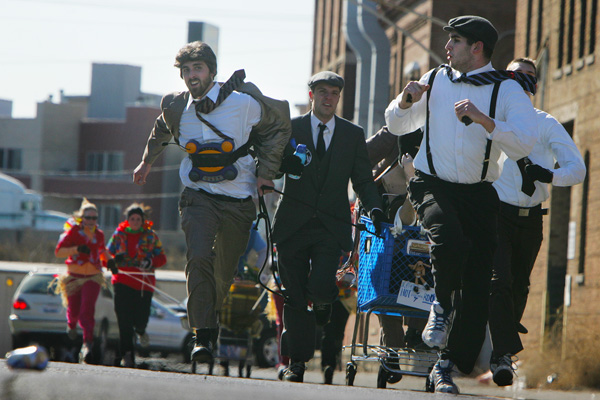
Photo: Wes Pope/Chicago Tribune
The inaugural Chiditarod, March 2006
This month Chicago ran an excerpt from Edward McClelland's Nothin' But Blue Skies, his new book about the Rust Belt Buffalo to Chicago. The excerpt, "Why All the Smartest People in the Midwest Move to Chicago," is taken from a longer chapter about how the author and so many other young people from the greater Midwest are drawn to the city:
The North Side of Chicago is such a refuge for young economic migrants from my home state that its nickname is “Michago.” In 2000, a quarter of Michigan State University graduates left the state. By 2010, half were leaving, and the city with the most recent graduates was not East Lansing or Detroit but Chicago. Michigan’s universities once educated auto executives, engineers, and governors. Now their main purpose is giving Michigan’s brightest young people the credentials they need to get the hell out of the state.
In the 2000s, Michigan dropped from 30th to 35th in percentage of college graduates. Chicago is the drain into which the brains of the Middle West disappear. Moving there is not even an aspiration for ambitious Michiganders. It’s the accepted endpoint of one’s educational progression: grade school, middle school, high school, college, Chicago. Once, in a Lansing bookstore, I heard a clerk say with a sigh, “We’re all going to end up in Chicago.” An Iowa governor once traveled to Chicago just to beg his state’s young people to come home.
Every University of Michigan BS who moves to Chicago means one less engineer for Detroit. It’s another consequence of globalization, the same force that’s destroying the middle class: Just as money and education have become concentrated among fewer people, they’ve become concentrated among fewer cities. Chicago is one of the winners.
I came here at the age of 21, and more than a decade later I'm still in the city—not from Michigan or elsewhere in the Midwest, but from another region that has its own history of migration to Chicago, up the Hillbilly Highway.
Then @nocoastoffense sent me this site from the University of Wisconsin that charts migration patterns in the U.S., and I was both surprised and not to see this chart of migration by age for Cook County from 1950 through 2000.
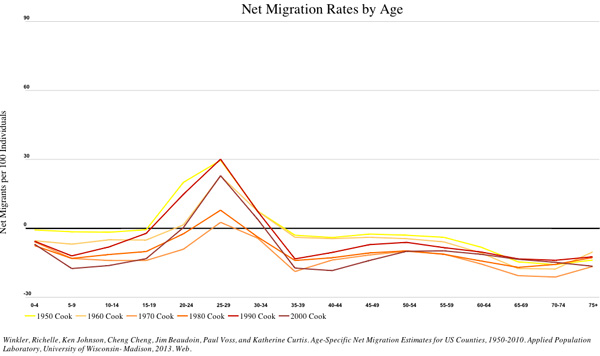
Apologies for it being a bit hard to read, but you get the gist. Chicago's seen its population fall every decade but one (1990-2000, when it grew four percent), but the county has senen positive net migration for ages 20-34 or thereabouts, depending on the decade. And it's been stronger in the past couple decades than at any time since 1950.
The collar counties? About what you'd expect. Here's Lake County:
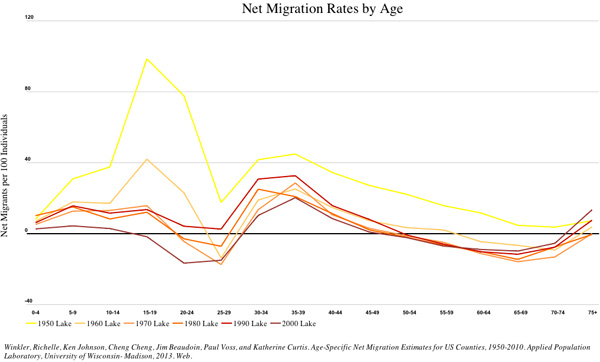
And Kane County:
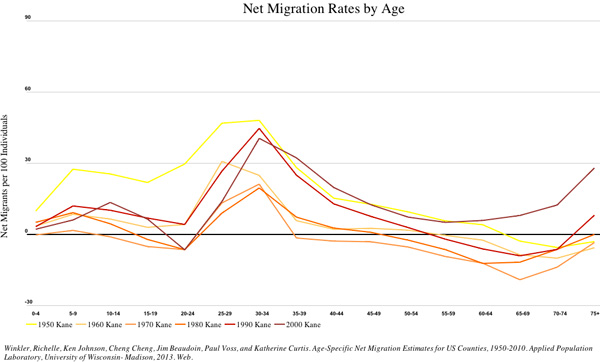
DuPage:
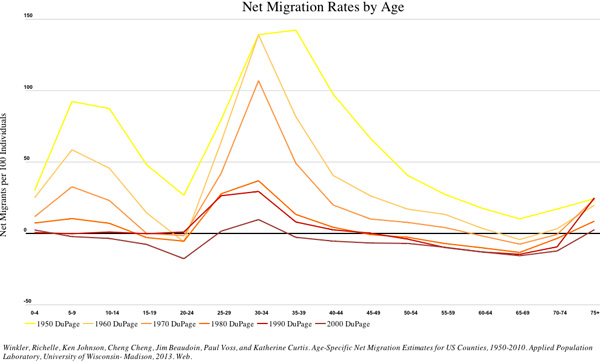
Once the kids see the bright lights of the city, it's hard to keep them on the suburb that used to be a farm. But then the challenge is keeping them there. Of course, the collar counties have their own challenges: they all see negative net migration at around ages 65-69. Where do they go? Here's my guess.
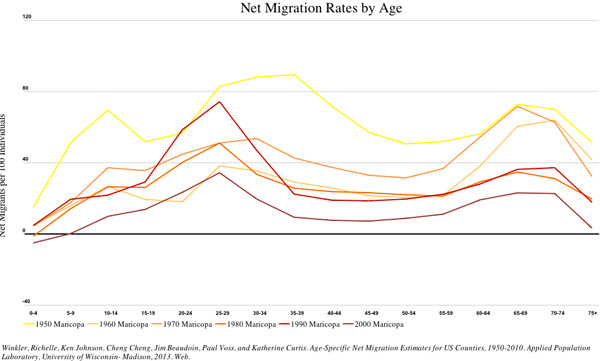
By that time, they get to Phoenix: That's sunny, historic Maricopa County, home to dry, warm weather year-round.


